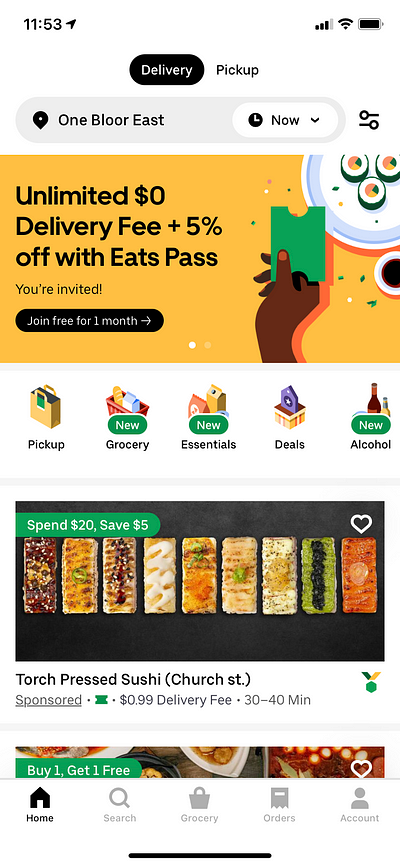
Context // Food delivery apps are a service that brings food or grocery items to a specified location. Apps that provide this service are catering to a range of users including people who can’t cook or have no time to do it, people who want to stay home but have a palette for ready-made food, or even people who use this app to hitch a ride with the delivery person.



Problem Statement // Food delivery apps like Uber Eats showcase too many options, leaving users feeling overwhelmed with the amount of choice that they have.
Problem Description // These apps showcase listed restaurants based on pre-determined categories that range from specific ingredients to general themes, like daily offers. This format is a great way to maximize screen space in offering a variety of options but has a greater risk in stimulating buyer’s overchoice.
Improvements // I plan on re-designing the IOS interface of Uber Eats to change behavioural effects of buyer’s overchoice in food delivery apps. The focus will be on emphasizing a single restaurant at a time by elaborating on the story behind the meal, the food, the ingredients, and the chefs who make it happen.
Necessity // The purpose is to reduce buyer’s overchoice, a cognitive impairment in which people have difficulty making decisions when faced with too many options. It is a phenomenon that occurs when users are presented with equivalent options and begin to weigh factors of each to find the option with the least risk. It is a mentally draining process and results in users choosing safer options. In the case of food delivery apps, users would tend to choose options that they have already tried instead of going for restaurants from small-business owners. Not only does this concept tackle overchoice in users, but it also provides the opportunity to increase traffic for small-business owners.
Constraints // Due to course constraints, I would not be able to conduct A/Btesting to compare the time that it would take for users to make a decision on the prototype and using the original design.
Design Plan // I plan on designing high-fidelity prototypes of an IOS application. The main feature would be a full-screen description a single restaurant including a breakdown of their food options and their preparation process. I will be utilizing full-screen horizontal and vertical scrolling methods to decrease the need for user interaction.